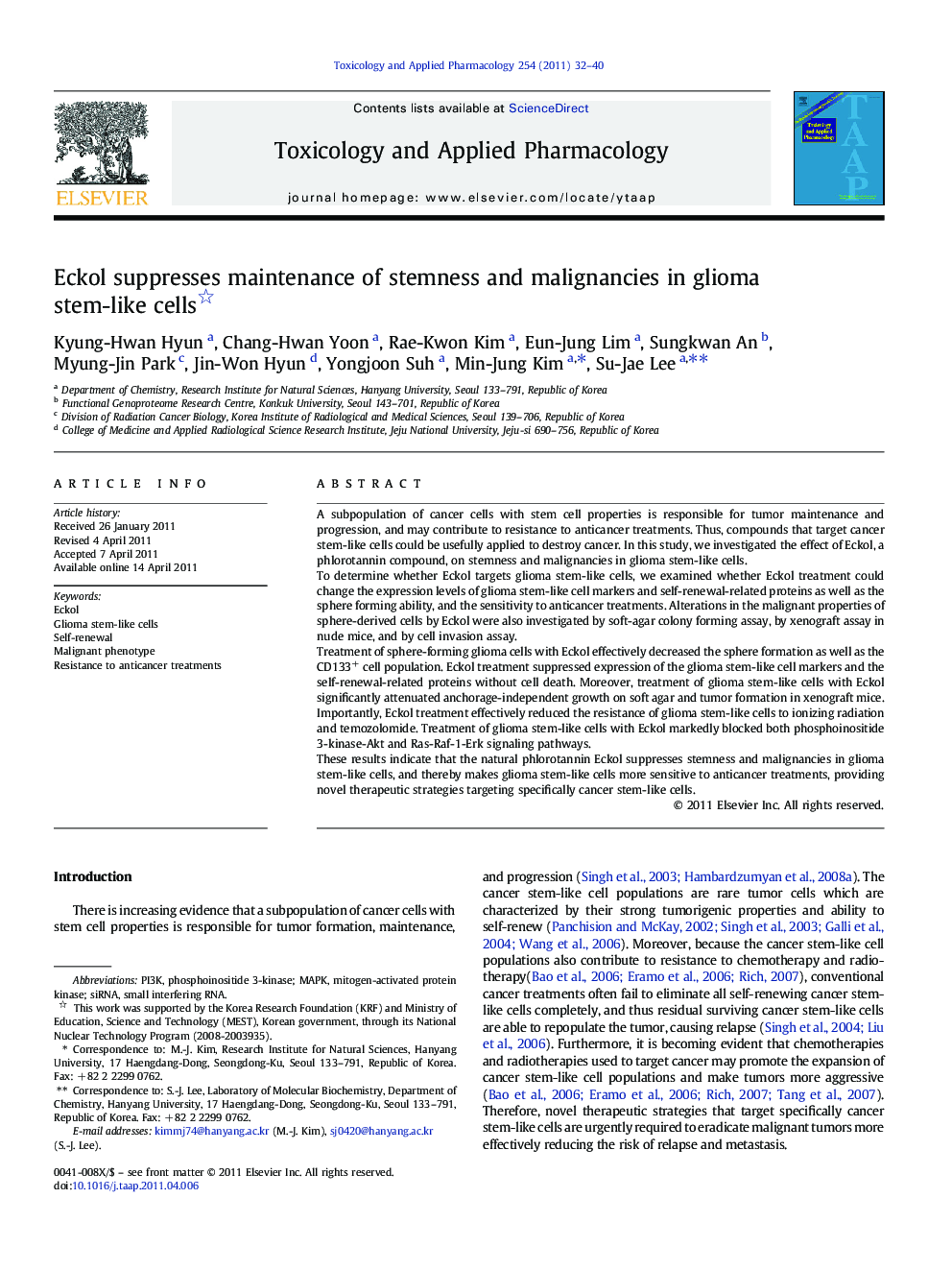| Article ID | Journal | Published Year | Pages | File Type |
|---|---|---|---|---|
| 2569356 | Toxicology and Applied Pharmacology | 2011 | 9 Pages |
A subpopulation of cancer cells with stem cell properties is responsible for tumor maintenance and progression, and may contribute to resistance to anticancer treatments. Thus, compounds that target cancer stem-like cells could be usefully applied to destroy cancer. In this study, we investigated the effect of Eckol, a phlorotannin compound, on stemness and malignancies in glioma stem-like cells.To determine whether Eckol targets glioma stem-like cells, we examined whether Eckol treatment could change the expression levels of glioma stem-like cell markers and self-renewal-related proteins as well as the sphere forming ability, and the sensitivity to anticancer treatments. Alterations in the malignant properties of sphere-derived cells by Eckol were also investigated by soft-agar colony forming assay, by xenograft assay in nude mice, and by cell invasion assay.Treatment of sphere-forming glioma cells with Eckol effectively decreased the sphere formation as well as the CD133+ cell population. Eckol treatment suppressed expression of the glioma stem-like cell markers and the self-renewal-related proteins without cell death. Moreover, treatment of glioma stem-like cells with Eckol significantly attenuated anchorage-independent growth on soft agar and tumor formation in xenograft mice. Importantly, Eckol treatment effectively reduced the resistance of glioma stem-like cells to ionizing radiation and temozolomide. Treatment of glioma stem-like cells with Eckol markedly blocked both phosphoinositide 3-kinase-Akt and Ras-Raf-1-Erk signaling pathways.These results indicate that the natural phlorotannin Eckol suppresses stemness and malignancies in glioma stem-like cells, and thereby makes glioma stem-like cells more sensitive to anticancer treatments, providing novel therapeutic strategies targeting specifically cancer stem-like cells.
